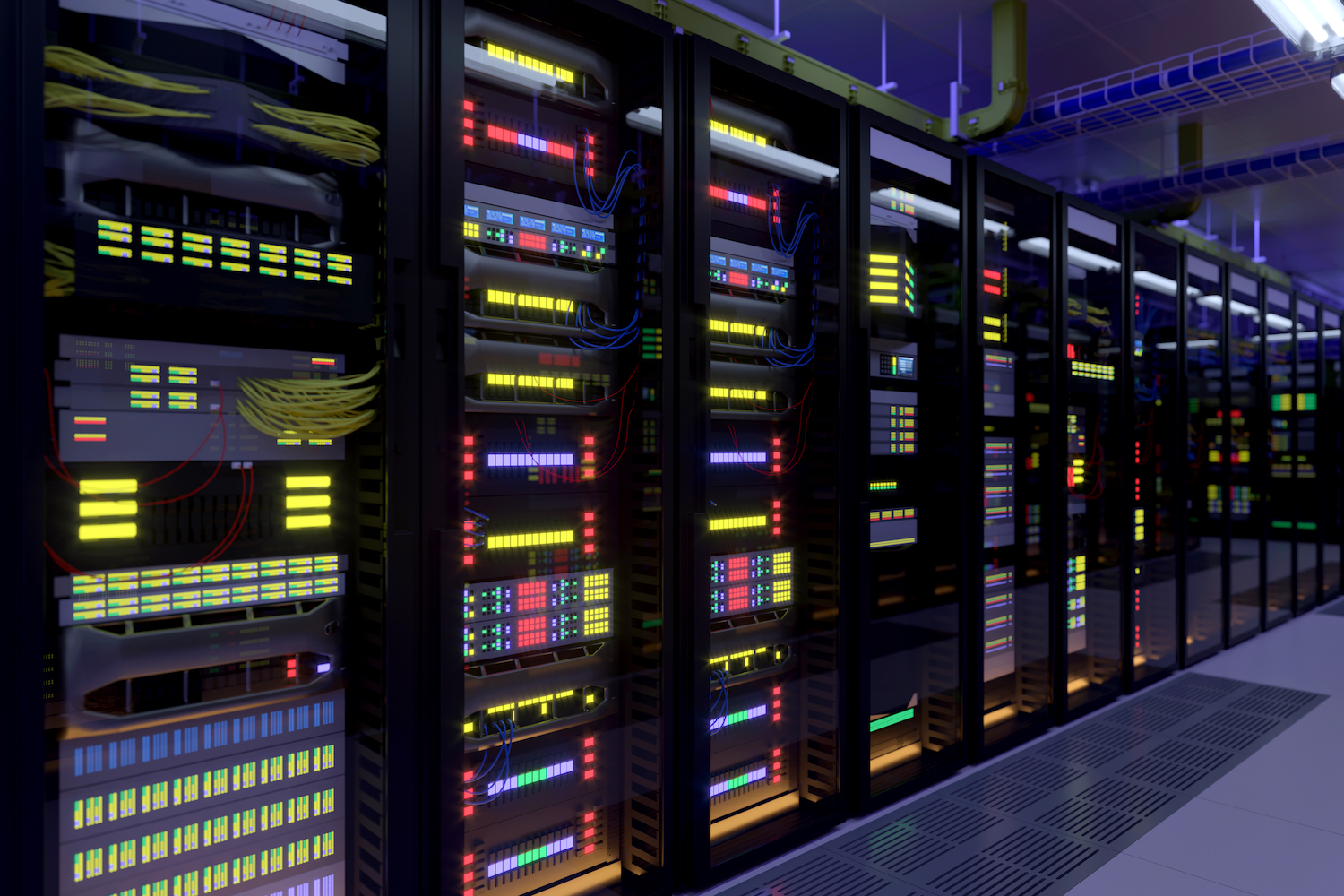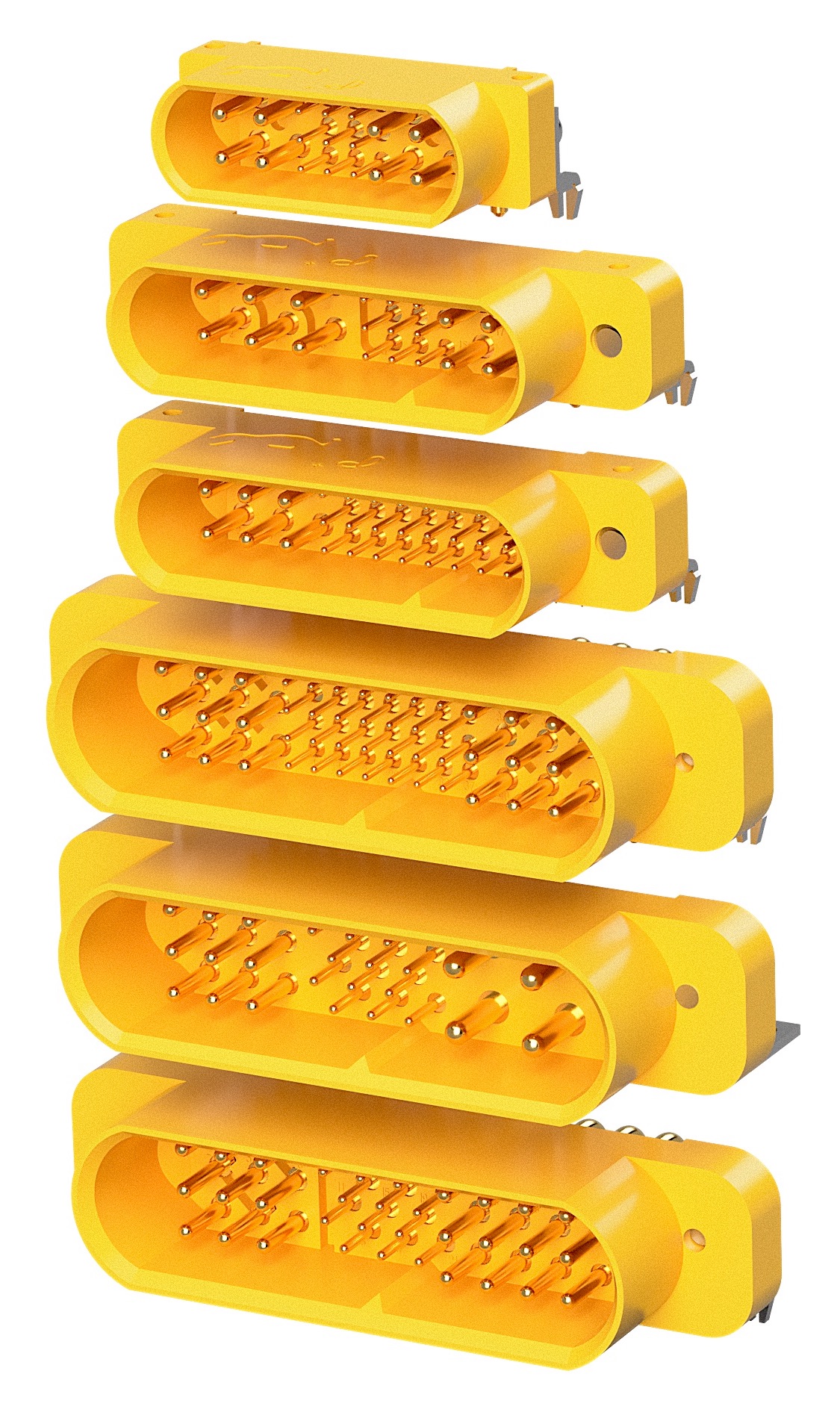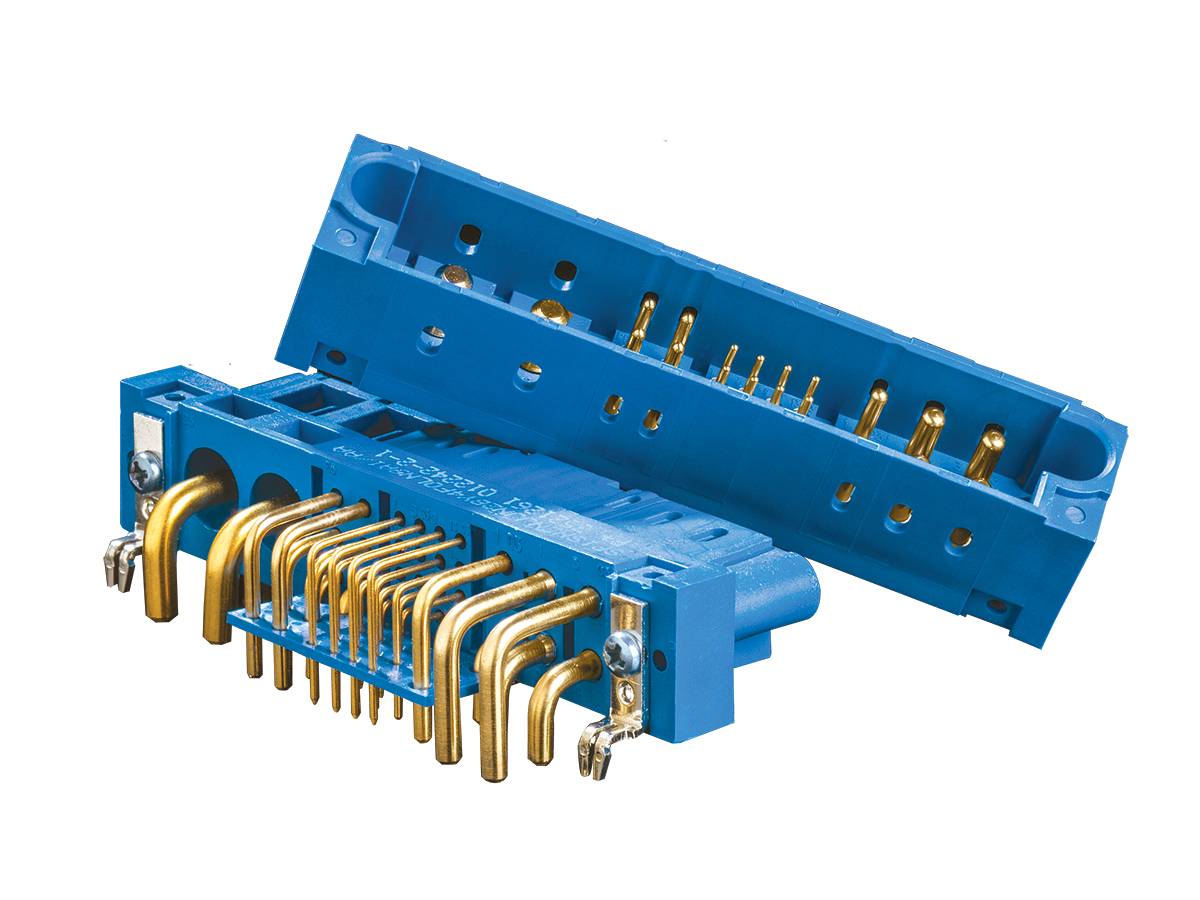Five Connector Considerations for Data Center Servers
We rely on data centers to bring connectivity to the world in an efficient, economical, and sustainable manner. The connectors designed into these increasingly important connectivity hubs make a surprisingly big impact on their operating costs and performance.

Today’s “big data” landscape is pushing many services to the cloud and tasking data centers with handling massive amounts of information. Just one of today’s largest social media sites currently stores more than 600 terabytes of data a day, so it’s no surprise that data center servers are processing 2.5 billion pieces of content a day. To manage this level of data, engineers must design highly effective systems. Every component in these systems, including the connectors, has a direct impact on their overall design, cost, and performance.
At the connector level, engineers must consider a number of critical factors before making their selections. These five areas are key to keep in mind when specifying connectors for use in data center servers.
1. Open Standards are Actively Addressing Increased Data Demands
The Cisco Visual Networking Index predicts that annual global IP traffic will reach 3.3 zettabytes by 2021 and that global IP traffic will nearly triple over the next five years, achieving an impressive 127-fold increase from 2005 to 2021. As such, many data centers are preparing to meet these new demands now.
New data center servers and system architectures will help them run more optimally and create competitive advantages and are part of a growing ecosystem of open product and computing standards, which have become increasingly common over the past decade.
Collaborative communities, such as the Open Compute Project (OCP) and Open19, have been organized to redesign hardware technologies to better support the growing demands on computing infrastructure. These organizations tend to work collaboratively with suppliers, leveraging their reference designs in an effort to move away from proprietary architectures and components, boost the speed of new system designs, improve interoperability, and reduce total system cost. As a result, open hardware standards are already impacting new data center designs and open computing standards, which allow for considerable flexibility in terms of modular integration and functionality, as well as vendor independence, are also resulting in the development and implementation of new standardized plug and card interfaces designed to satisfy current and future data demands.
Connectors play an especially important part in data center hardware designs due to their ability to optimize power utilization, reduce the per-rack cost of data center servers, and lower the cost per server, especially in open-standard applications where everyone can clearly understand the value of these components. Although each individual connector might not appear to achieve much cost savings, data centers employ thousands of connectors, so connector selections can add up to huge savings over a year of operation.
2. Connector Selection Impacts Data Center Cost Savings
It’s no secret that data center servers generate a great deal of heat and make for huge data center cooling costs. Strategies such as building data centers in cooler climates and opening windows are not always possible, but connector selection can always help reduce costs associated with heat. Connector designs that are optimized for cooling (i.e., those with integrated ventilation capabilities) are proven to reduce data center heating costs. These types of connectors are much more effective than standard connectors with a solid surface area and no airflow between the contacts, as they force air to flow from rear to the front of the connector and encourage vertical convection airflow using vents.
However, heat handling capabilities aren’t the only way that connectors help reduce data center system costs. Connector selection can make a big impact in terms of energy cost savings as well. In fact, the realized savings can be millions of dollars! For example, the Positronic Scorpion connector has been proven to provide significant power cost savings. Simple calculations show that the Scorpion saves 1.1kWhr/week, 4.7kWhr/mo, or 56.5kWhr/yr, which, at $0.12 per kWh equals $6.78 per connector, per year in savings. In large data centers with hundreds of thousands of servers and connectors, these savings can amount to an impressive $4 to 6 million in annual savings.
3. Contact Types Impact Power Density Differently
Engineers are also wise to consider the various types of contacts used in data center servers and other hardware solutions because power density can make a significant difference in terms of overall performance and costs. There are tradeoffs for each type of contact, so understanding the differences and calculating the costs over the lifetime of a server are smart ways to optimize data center connector selections.
Connectors with stamped contact technologies have been popular for decades. To solve the problem of high-current distribution in these designs, many stamped-contact connector manufacturers also offer blade connectors, which have power contacts with large flat sections of folded sheet metal. Blade connectors are often attractively priced, but are not particularly dense or small in size.
Connectors with solid-machined or precision-machined contacts are another interconnect technology used to solve power connector density issues in data center servers. When used in advanced mating area designs, solid-machined contacts offer up to two times more power density than blade-contact connectors, which means that they can transfer twice the amperage a same-sized blade connector can.
Solid contacts also utilize a solid mass for current transfer and have more solid metal in the spatial contact area compared to stamped contacts. Mass alone, though, does not necessarily ensure a superior power contact. Optimized power contacts must also employ a male-to-female mating system that ensures a large connectivity surface area in order to maintain low contact resistance levels and support maximum current-carrying capacities. But many solid-contact designs offer contact resistances that are a fraction of those found in common stamped-contact connectors — a fact that’s fundamental to solid-contact connectors’ ability to transfer two times more power than blade connectors.
Materials, too, can make a difference in the performance of a power contact. If more power density is desired, designers can specify connectors made with super-conductive alloys. These alloys reliably increase current-carrying capacity and density, but typically come at a higher price, which could offset overall system cost savings.
Establishing a keen understanding of the impacts of cost versus performance is a significant factor when choosing connector products for data center servers.

Positronic Goldfish GFSH Series mixed-density power connectors accept multiple contact sizes to enable the mixing of AC/DC inputs, signal, and DC distributed outputs in a single, space-saving package, deliver excellent power density and hot plug capabilities ideal for tight-fit, blind-mating, and harsh-environment applications, and comply with UL and RoHS requirements.
4. Modular vs. Custom Connectors
Modular connector families offer highly customizable connectors comprised of various, individually selectable components and can provide reliable, cost-effective connectivity solutions uniquely suited to individual data center application requirements. These connectors can be used to engineer new, more efficient system-level technologies, and offer benefits including off-the-shelf customization, fast and flexible assembly, and a level of affordability that helps engineers reach product goals safely and efficiently.
Since modular connectors are comprised of several customizable modules, their construction is an important specification consideration. The various components of modular connectors can be individually molded and attached with high-reliability adhesive or created using monolithic injection molding processes, the latter of which results in modular connectors with much higher reliability and higher temperature capabilities than those with individually molded parts.
Modular connectors are popular choices for data center servers because they offer a selection of customizable modules, allowing engineers to select the ideal combination of size, weight, and power (SWaP) characteristics based on individual application demands without having to create a custom connector from scratch. While fully custom connectors are sometimes the best solution, they take longer to implement and can come with additional costs. Plus, both modular and custom designs are generally available as product samples that data center engineers can subject to testing in order to fully understand the tradeoffs of the various options and make the best possible choice for their end solution.
5. Quality Components Contribute to Data Center Server Efficiency
Today’s consumers expect instant, uninterrupted data access and, since the cloud connectivity market is both continually expanding and subject to increased competition, equipment failures are simply not an option. As such, every component in these systems, down to the connector hardware, must be made with reliability in mind.
Even the smallest components can contribute to the success or failure of a given design. Choosing quality connectors for data center servers and other networked hardware will not only save on long-term costs, but will also ensure reliable connections over the length of equipment lifetimes.
Engineers have overcome many challenges throughout the evolutionary development and operation of data centers, but are always looking for ways to further reduce costs and improve performance. As the demand for and growth of date center server facilities has skyrocketed, the importance of specifying high-quality components in their various systems cannot afford to be overlooked.
Quality is usually found in the details. In this vein, connector manufacturers should offer more than just a connector product for a price. Top-quality connector suppliers tend to provide added-value services including in-house design and development capabilities, invite potential customers to investigate their internal manufacturing capabilities, and offers quality customer support, ranging from providing standardized compliance with a variety of international and customer-specific environmental requirements to adhering to a variety of in-house quality assurance programs.
Quality also counts because the replacement costs for component and system failures can add up quickly. So, spending the time to learn which options produce the highest return on investment, deciding which features are most important for a given application, and identifying which manufacturers offer the best products that suit these needs will help ensure successful project outcomes.
Like this article? Check out our other Connector Basics, data center, and cloud computing articles, our Datacom/Telecom market page, and our 2019 Article Archive.
- Modular Connectors Help Data Centers Optimize Energy Efficiency - September 21, 2021
- Five Connector Considerations for Data Center Servers - November 19, 2019






